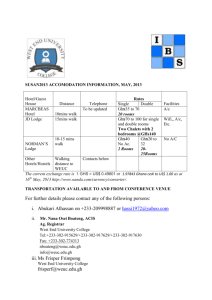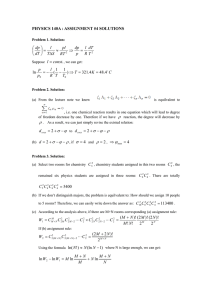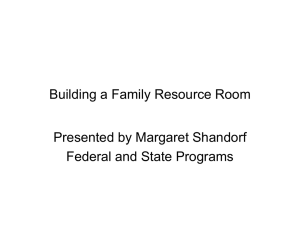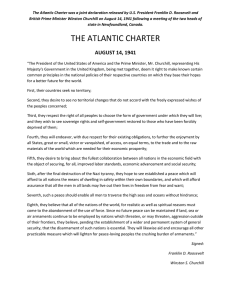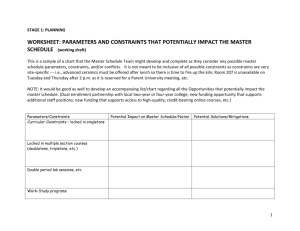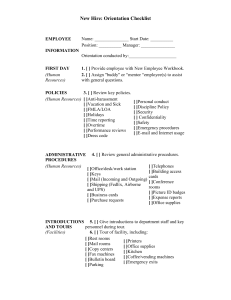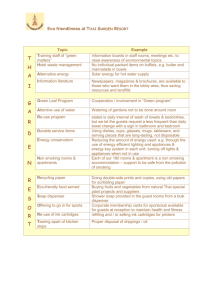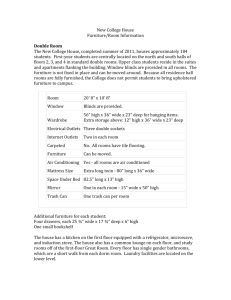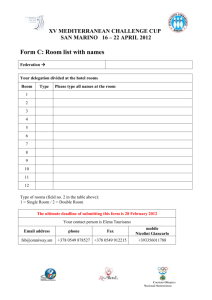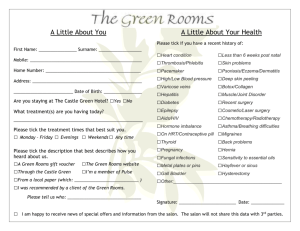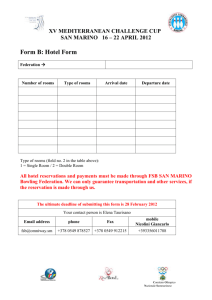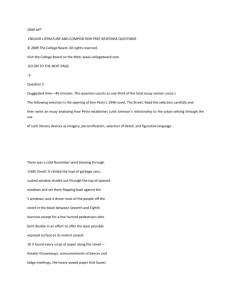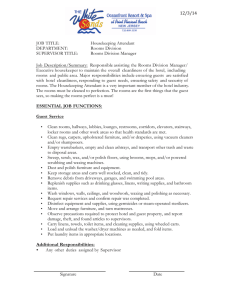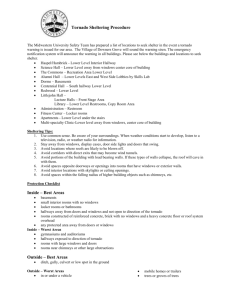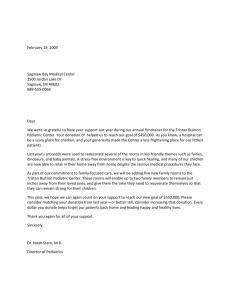War Room
advertisement
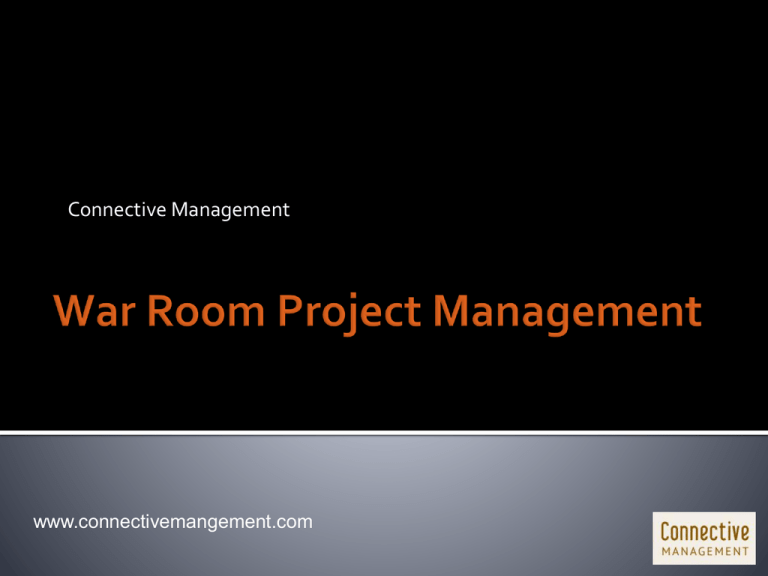
Connective Management www.connectivemangement.com 1. Opening – 10 min Introduction - Brad Closson and Mike Leamon Agenda Review Next Slide 4. Intro: Visual Planning & War Rooms - 5 5. Warm Up – 5 6. Activity: Design a BA War Room - 20 7. Value to YOU? – 7 8. Your next steps – 8 9. Q & A – Remainder - 5 2 Your experience levels? 2 way street information exchange You learn about War Rooms We learn about Business Analysis NOT a full War Room enablement It’s a “Mentored Discipline” Top of mind questions to address during the session? 3 www.connectivemangement.com Simple Personal Planning Advanced Visual Management War Room 5 The Cabinet War Rooms were used by Winston Churchill throughout the Second World War from 1939 to 1945. Churchill announced, "This is the room from which I will direct the war." “….the chief task of the officers manning it was to collate and summarize all relevant information on the war's progress and present it on maps, which would be constantly updated.” 6 “War Room” Team Room for Meetings Emergency Control Center Team seating “Bullpen” Management Cockpit Project Management Room Visually Facilitate the Project Story 7 Help people accelerate the process of solving real business problems or capturing strategic opportunities The highest level of a War Room is where a story is told and an army of story tellers are created. Stories organize people - they affect the way people identify themselves, collect data, and most important, how they behave. Pictures, graphics and other dramatic techniques for the sake of the story and solution are crucial. 8 Classic War Room Design Start Desired Outcomes Ending Implementation & Accountability Plan Root Cause Problem Solving Purpose / Charter Current State How it works + pain & opportunities Future State Design Solutions 9 Activity www.connectivemangement.com Activity www.connectivemangement.com Agree the context / Top level story Brainstorm the story line Parent level elements Drill down into some visual planning tools Child level elements Key Questions 12 www.connectivemangement.com More effective meetings and projects Our brains are built to process pictures, and we think in pictures. The visual part of the brain takes up half of the brain processing power. A study from the 1960s shows that we can remember pictures a year later with 63 percent accuracy. We remember only 10 percent of what we hear or read (without pictures). Source: http://mydesignnotes.com/why-visual- storytelling-is-so-powerful 14 Analytic – Allows groups to handle a LOT of data / information Associative – Allows jumping around / simultaneous solving Creative – Encourages messy exploration / Taming the swirling vortex High Involvement Tell me and I will forget, show me and I may remember, involve me and I will understand! Leverages the wisdom of the organization – people’s knowledge, expertise, etc… Leveling – Respectfully call BS /Best solution wins / Politics aside / Check your role, status, titles & org at the door Low tech – Push technology out of the way of face to face interaction Results oriented – Charters, expected outcomes and actions keep everyone clear on how results are defined, achieved and measured Shared – Build real time understanding & agreements Story based – Instinctive, memorable and motivating way to engage participants Visual – Makes invisible information and ideas tangible through mind maps, graphics, etc. 15 www.connectivemangement.com The name we use for the facilitator / owner Architects the content structure Content “Author” Can be the Project manager Facilitates waves of contributors Gets out of the way when possible 17 • • • Don't start a War Room that you will not finish Never let it go stale And avoid over commitment based on lack of war room experience 18 Ready Watch out for over committing to a War Room effort which is beyond your capabilities!!! War Room Practice or Apprenticeship Leading High Stakes Open Planning 19 Architect’s War Room Competence Group’s War Room Competence Context and Content Complex High Expert In Flux Political Intermediate Medium Stable Beginner Low Non-Political Simple 20 Charter SIPOC Process Mapping Wire Framing Data Schemes Brainstorming Report Design and Examples Project Management War Room Planning Horizons Storyboarding Presentations Visual Management Board 21 Agenda check Call to action “I feel a war room coming on” War Room articles/tools at www.connectivemanagment.com Q&A 22
